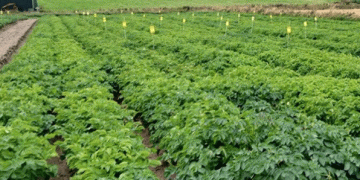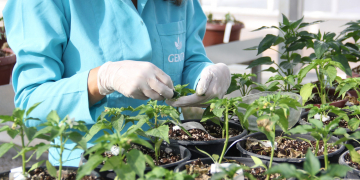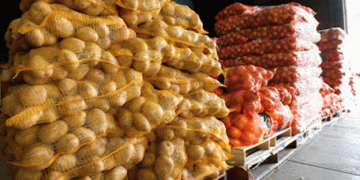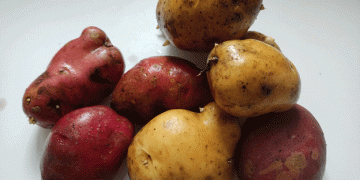In a fertigation trial in potatoes, Aeres University of Applied Sciences compares schemes with four nitrogen levels and two different phosphate levels. The moisture supply is based on soil moisture sensors. The trial is being conducted with three common tetraploid potato varieties and a new diploid number.
In a trial plot on the teaching plot of Aeres Hogeschool near Dronten, researcher and teacher Michiel Klaassen explains to Christiaan van Mechelen and Martijn Kroeze about the tangle of snakes between the potato ridges. ‘For each object we treat here, a separate hose runs directly to the dosing unit. In this way we can provide each field with exactly water and different doses of liquid fertilizers’, he explains.
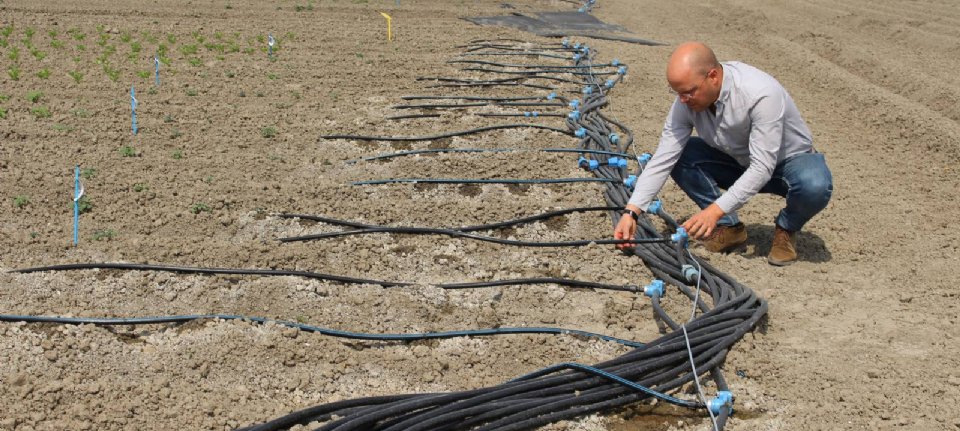
Van Mechelen and Kroeze work for seed potato grower Leo Overbeeke in Dronten. They have been invited to view the test set-up with three repetitions of the fertigation test of Aeres University of Applied Sciences. Their employer, together with fellow seed potato grower Jasper Muller from Emmeloord and potato breeding company Solynta, is a partner in the research. Klaassen is coordinating the trial on behalf of Aeres University of Applied Sciences.
Three-year project
The fertigation trial is part of a three-year POP3 project submitted via the province of Flevoland. The aim is to find out what is possible with fertigation in potato cultivation and what the best strategy is. The trial was carried out last year with diploid potato varieties from Solynta grown from small plants. This year it was decided to include the standard varieties Fontane, Markies and Annabelle in the objects in addition to seed potatoes of a diploid variety.
‘In this trial we are also gaining experience with diploid potatoes’
With this trial we want to gain additional insight into the application possibilities of fertigation for the cultivation of potatoes based on seed potatoes. The development of plants from seed potatoes is different from seedlings we used last year’, explains Klaassen.
Soil moisture sensors
According to the researcher and teacher, the dosing of the fertilizers and the application of moisture will start from this week. The delivery of water is automatically set via soil moisture sensors. The intention is to vary the nitrogen application from 0 to 100 percent of the requirement and to link two phosphate levels to this. ‘During the growing season, we will closely monitor the leaf surface development per variety in the eight different objects. We also measure the chlorophyll levels in the leaf’, says Klaassen.
Ultimately, the yields of the trial fields are determined, as well as the quality of the harvested potatoes. ‘We hope then to be able to say more about the added value of fertigation and also about the optimal doses for nitrogen and phosphate. We are also gaining more experience with the cultivation of diploid potatoes and it is better to make a comparison with the cultivation of the common tetraploid varieties.’
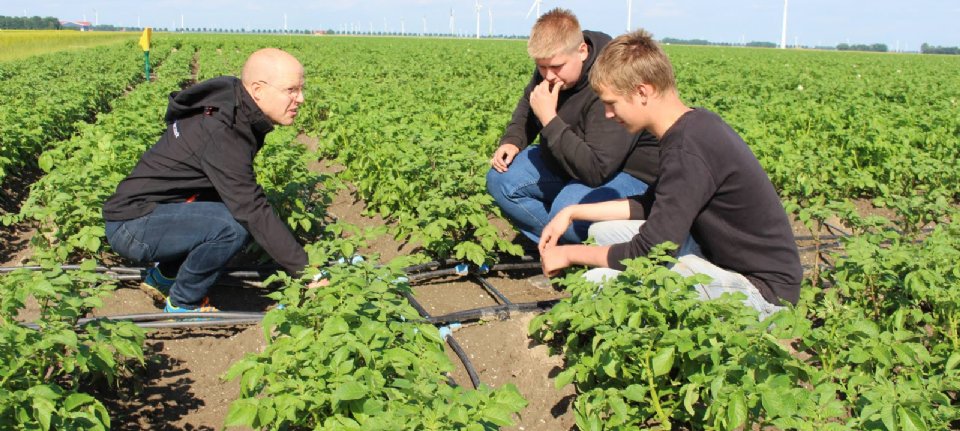
The teacher and researcher of Aeres University of Applied Sciences reports that the fertigation project serves as a demonstration object in addition to the function of an official test in three repetitions. ‘We offer students and interested parties the opportunity to visit our teaching learning plot by appointment and to update them on our experiences in this research so far.’
For 60 years, students in Dronten learn about agribusiness, food business, horticulture and animal husbandry. The programmes combine theoretical study with practical training. For more information go to Study in Dronten.
Professorships Aeres University
- Potato supply chain and innovation of the sector
- Agricultural water management
- Sustainable soil management
- Grasslands and pasturing
- Management of cattle health
- Precision agriculture
- Precision nutrition and sustainable poultry farming


